
What are those… white piles on dairies with all the tires? If you’ve driven by a dairy farm and seen large white piles with tires, this post will explain what they are.
Here is a real question – How do you store feed for your cows so you can feed them all year around? It’s easy to forget that grass only grows during certain times of the year. In the winter it is too wet, rainy, or snowy to grow grass, while in the middle of summer, grass will die if not irrigated by man. So how can you create a food supply for the cows so you can feed your cows daily?
Common life cycle of grass – Grass doesn’t grow all year
Don’t Judge each day by the harvest you reap, but by the seeds you plant – Robert Louis Stevenson
Storing Feed Year-round
This feed storage problem has been around for farmers throughout time. Being that a cow will eat over 100 lbs. of feed per day, how do you store enough food for her during those months with less grass.
Farmers today grow feed during the growing season and store it in large piles. The grass is cut, put into a pile, then is compacted and covered with plastic to protect it from oxygen and the elements. The plastic covering removes oxygen from the pile so the grass can ferment naturally with microbiological bacteria. Oxygen allows spoilage, but the absence of oxygen allows anaerobic bacteria to ferment the feed and prevent spoilage. The fermentation of the grass allows storability for 1-2 years (or more) without any refrigeration.
Fermentation is not a new way to preserve foods and has been done throughout the centuries by different people groups around the world. Think sauerkraut, soy sauce, kimchi, yogurt, kefir, cheese, wine, beer, pickles, etc. Fermentation usually improves the digestibility of foods and helps keep your guts microflora healthy.
The fermentation of the grass allows storability for 1-2 years (or more) without any refrigeration.
Fermented grass is called silage by most farmers today. Feed used to be cut and put in silo towers. You’ve probably seen them; most old red barns have a silo tower next to them.
Making silage is not a new invention. The tradition can be traced to farmers in Germany who in prior centuries ensiled their grass in the same manner as they would make sauerkraut. American farmers didn’t start the practice until 1876. The first notable reference was in 1877 by Auguste Goffart, a French agriculturalist who popularized the method of feed preservation to farmers in his writings. From then, many farmers started using these methods to preserve feed for their cows.
The grass is harvested and put into a pile, the tractor compresses the feed pile to eliminate oxygen
Why the Tires
Why cover the piles with tires. Most people use tires because they offer good weight, they are easy to move, and take off. They offer enough weight to compress the pile and keep the cover on. Who knew used tires could be so useful.
The grass pile is covered with the tarp and tires to keep out oxygen which allows anaerobic fermentation of the feed just other fermented foods like saurkraut or kimchi.
Is Silage good for the Cows?
Is the fermented grass healthy for the cows? Interestingly, the fermentation process actually improves the quality of feed for the cows. Much of the grass cows are eating is made of cellulose and hemicellulose, the fibrous components of grass that people cannot digest. When a cow eats grass, it first must be fermented by bacteria in one of her stomachs called the rumen. The fermentation of the silage pile is the same type of fermentation that happens in the cow’s rumen. The silage is actually predigested for the cow and makes it easier for her digestive system. The method makes the feed more digestible for the cow.
You can learn more about cow digestion here
In many cases, ensiling grass helps preserve the nutrients in the feed. Compared to making hay bales where many of the leaves of the grass fall off the stem when it’s dried, making a silage pile of Alfalfa hay not only improves digestibility, but it also improves the amount of nutrients in the plant from harvesting. Alfalfa hay that is put in a silage pile usually has more protein than Alfalfa that is made into hay bales.
Silage makes feed more digestible for the cows and improves feed quality
Making silage is a science and there has been a lot of research into the best ways to make silage. Ruminate nutritionists at many universities have also done a lot of work understanding silages impact on a cow’s health. The information has been very positive – if you think about it, it’s like kimchi. Fermented foods are great for digestive health.
The pile is carved off and fed to the cows as needed, the feed has a shelf life for 1-2 years (or more) without any refrigeration.
What kinds of Silage
Interestingly there are many different types of silage. Virtually any grass can be ensiled including corn, alfalfa, wheat, rye, barley, sorghum, oats, and more.
The most common silage in the U.S. is corn silage. Corn is really just a very tall grass. Compare a corn plant to a wheat plant; they look nearly the same only corn is a much larger plant. The entire plant is harvested, shredded, and put into a pile. The entire plant can be eaten by the cow including the grain. The corn kernels have starch for energy and the stalk has plenty of fiber.
Corn is also environmentally friendly because of the amount you can grow per acre. Less land and other natural resources are needed to grow feed. A corn stalk will grow up to 10 feet tall so on a per acre basis you get much more feed. If you grew other grasses, you would need more land.

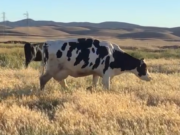
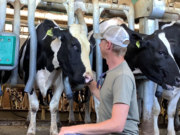
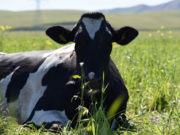
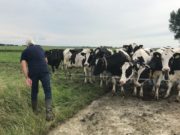
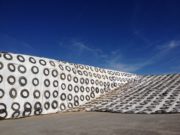


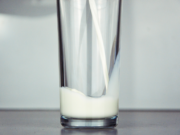

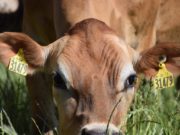

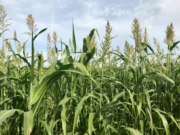
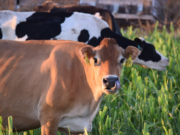
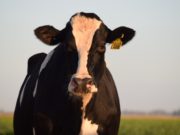
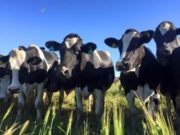












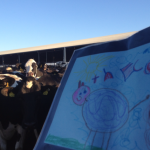
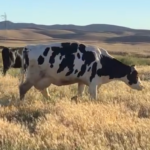
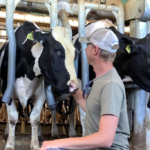
Great article! Here in Holland where I live I see two storage techniques for silage: the first is what you describe above, a huge mound covered with a tarpaulin and weighted down by old tires. The second are shrink-wrapped bales, two or so meters square, which are produced in the fields using a special machine. They are produced here from early May (the first mowing) through September. It’s a typical sight at dairy farmhouses these days: large heaps of silage bales piled two or three high.
Just discovered your blog: nice!!
I want to know how they cut the tires up
idk, maybe a sawzall- they deliver them to us precut
Cool article. Thank you!
Thanks for educating us City kids! Ok question: do cows catch a buzz from sileage?
Yeah no alcohol in the silage- those would be some happy cows if that were the case lol
What do dairies do with the left over plastic?
It can be reused several times then recycled
I was looking at the Southfork Dairy Farm in Dimmitt, Texas on Google Maps, and saw this huge silage area near Opplinger Sunnyside. It was quite impressive from the aerial view, and I had to know what it was. Thx for this article which enlightened me!